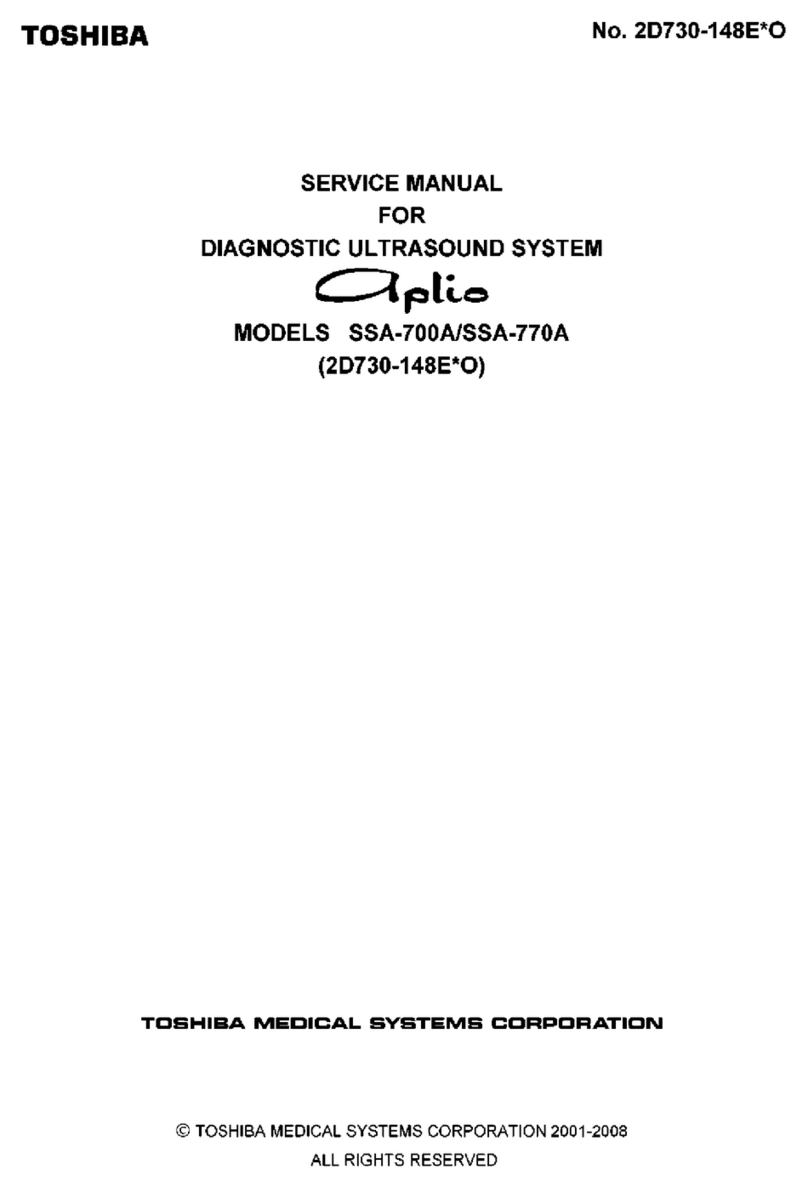
No. 2B771-004EN*M
U-1
Organization of the Operation
Manuals
1. Notation Conventions
In this operation manual, the following word is used in addition to the signal words related to the
safety precautions (refer to section 2 "General Safety Information"). Please read this operation
manual before using the system.
NOTE: Indicates reference information that enables more efficient use of the equipment.
2. Operation Manuals
A TOSHIBA service person or instructor will explain the basic operating procedures for this
system at the time of delivery. However, read this operation manual carefully before using the
system in order to understand the detailed operating procedures, functions, performance, and
maintenance procedures.
Operation manual for the main unit
of the ultrasound system
Fundamentals volume
(this manual)
.........Describes the basic information
concerning the system, such as
preparation for examination, operation,
inspection, and functional descriptions of
the system.
Applications volume .........Describes the exam data manipulation
procedures and optional unit operation
procedures.
Measurements volume .........Describes the registration and
measurement procedures.
Acoustic power and surface
temperature data
.........Describes the acoustic power
transmitted from the ultrasound
transducer.
Operation manual for each
transducer
.....................Describes the operating and
disinfection/sterilization procedures for
the transducer.
NOTE: For certain applications, the following manuals are available in English:
2B771-005EN Applications volume
2B771-006EN Measurements volume
2B771-007EN Acoustic power and surface temperature data (For regions other
than the USA)
2B771-008EN Acoustic power and surface temperature data (For the USA only)
2B771-010EN Operation card
NOTE: The operation manuals Applications volume and Measurements volume may be
supplied on electronic media.





























